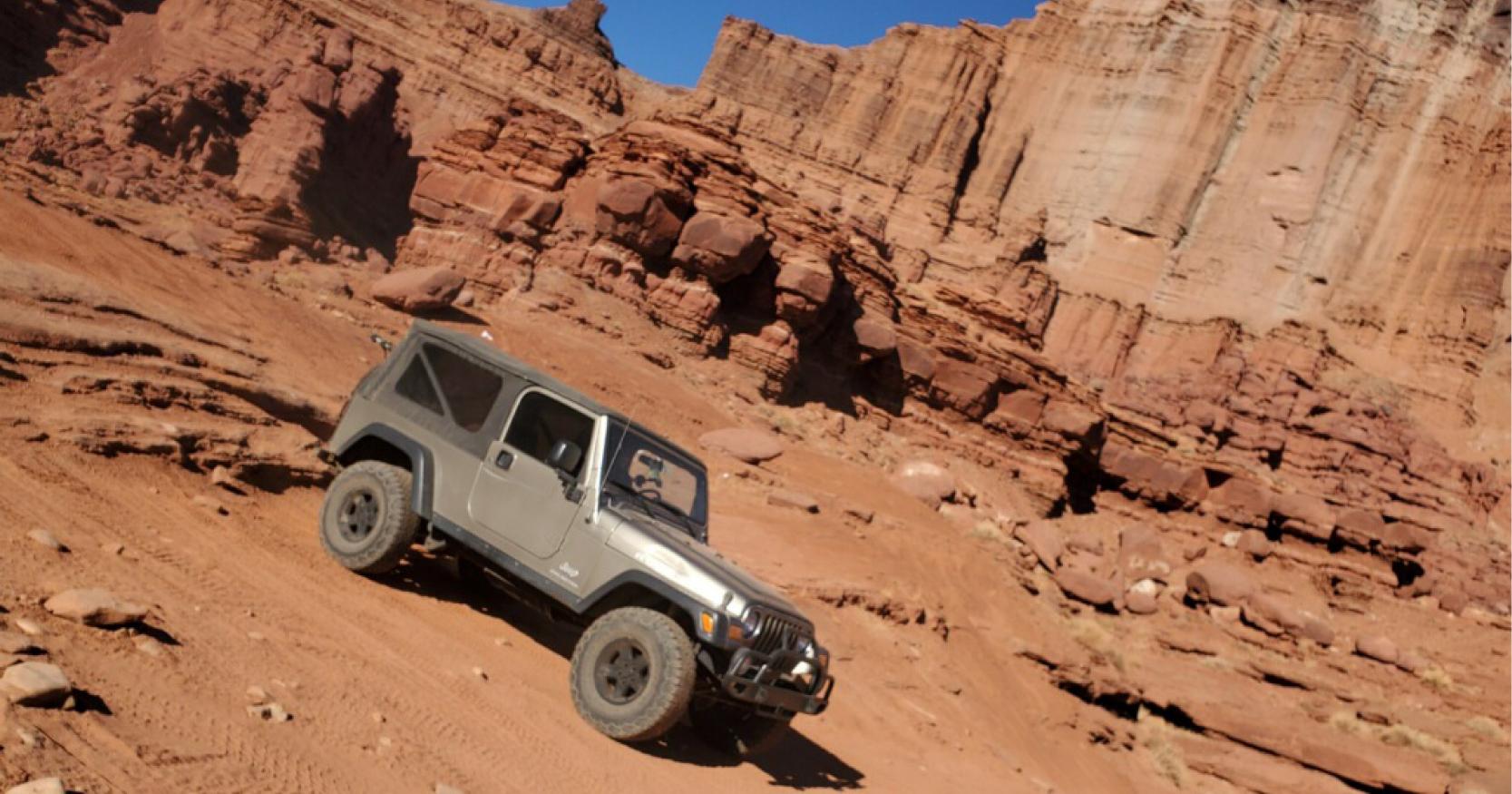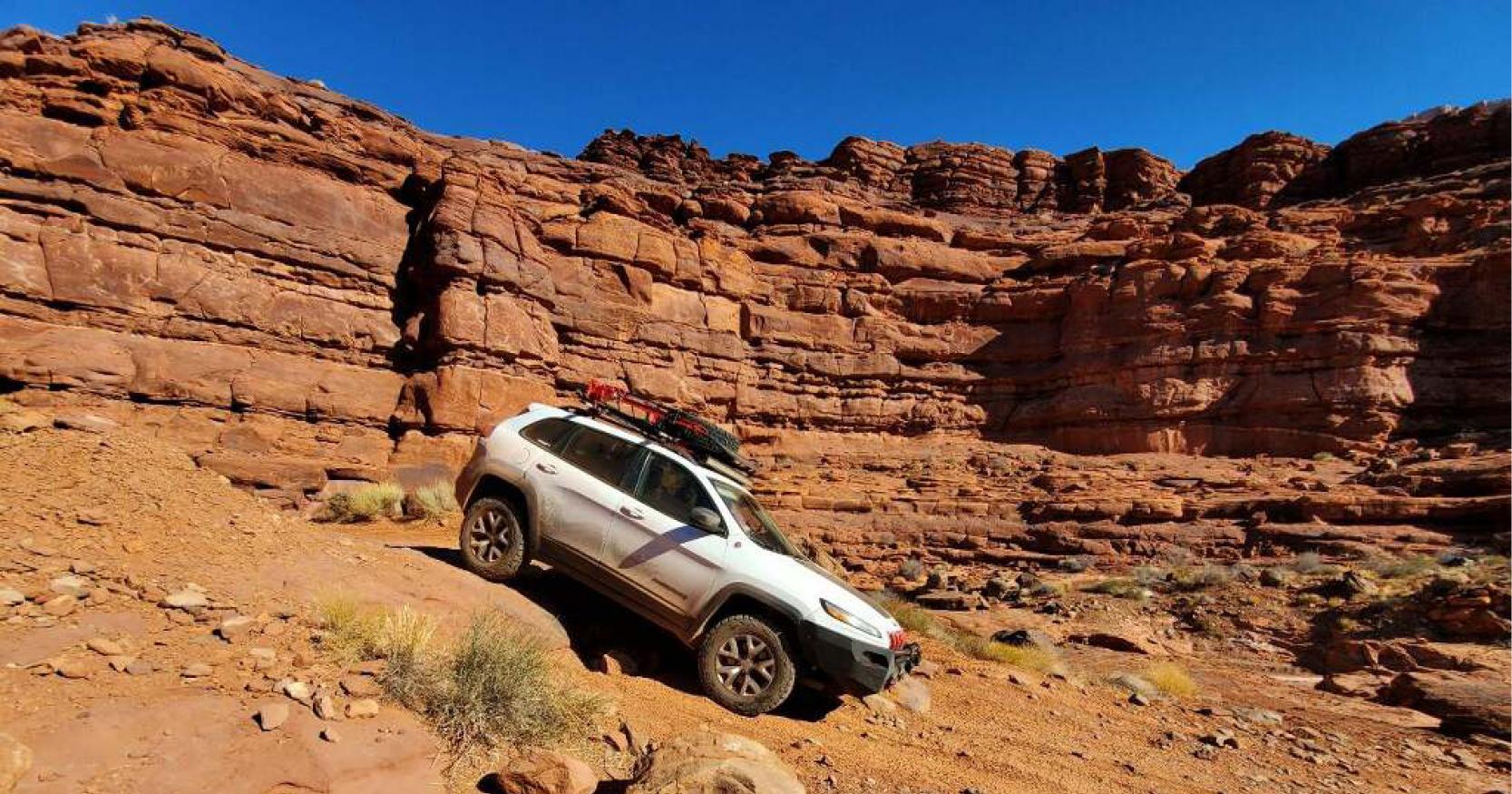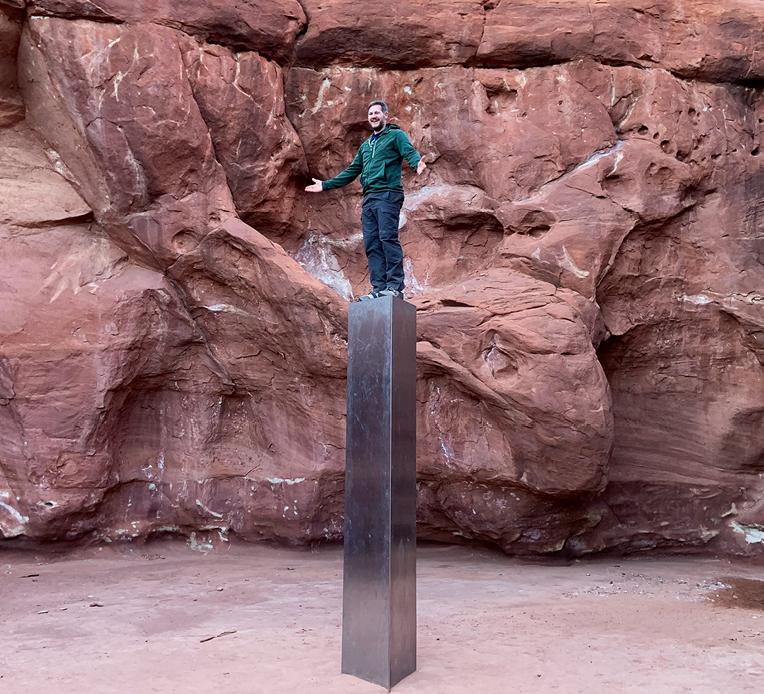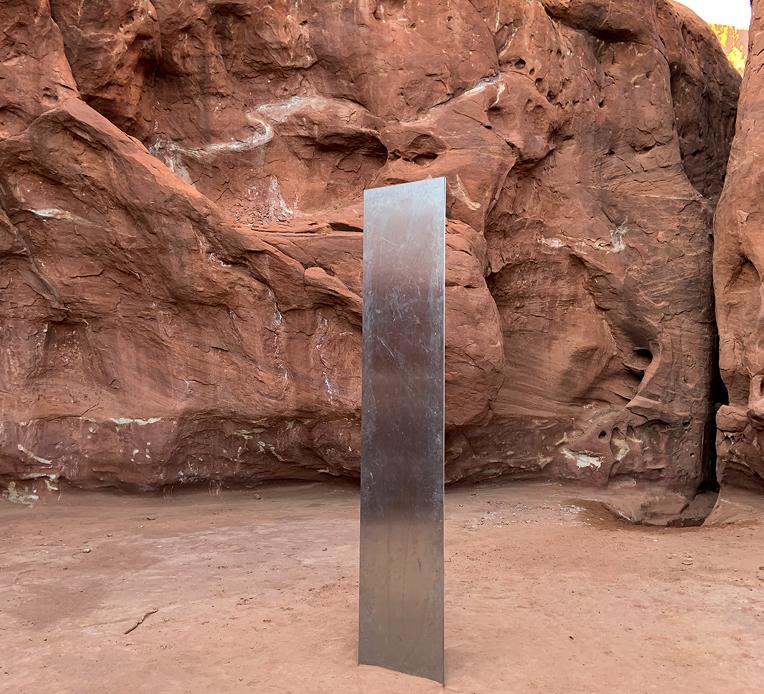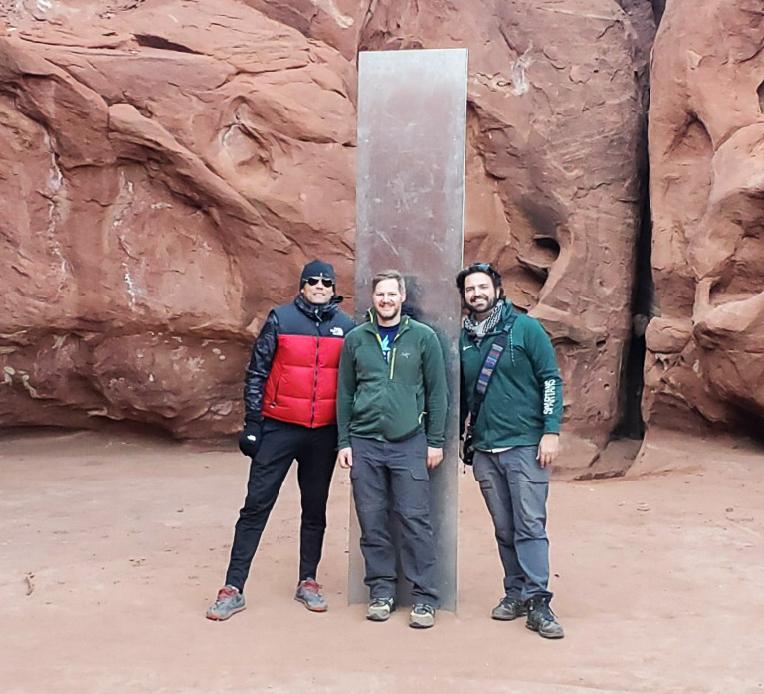It was spectacular.
Utah’s triangularly metallic cause célèbre — the “Monolith” — was recently discovered by a sheep-counting Utah Division of Wildlife Resources helicopter pilot in a remote part of the desert between Canyonlands National Park, Monticello and Moab, Utah.
The Monolith’s discovery immediately evoked the mysterious black obelisk in Stanley Kubrick’s 1968 classic film “2001: A Space Odyssey” — and became an overnight worldwide sensation, capturing the imagination of millions. News and social media were abuzz with outlandish and sensationalistic speculation that the mysterious Monolith was the extraterrestrial work of aliens, an unknown artist(s) or merely a marketing stunt.
Reactions, though varied, were vigorous, unambiguous and quick. The sheer existence of the mysterious obelisk struck a chord with Instagram, YouTube and social media “influencer” types, nature enthusiasts and urbanites both near and far. At a time when cohesion was elusive, an unknown artist, at an unknown time, extended an opportunity yearned for, resulting in dialog, debate and collective wonder during unpredictable and uncertain times.
Whimsically — a mere two days prior to Thanksgiving — I texted two fellow Spartans, RJ Banat and Alan Heath, both of Denver, Colorado, to gauge interest in a spontaneous trip to Moab over the long holiday weekend. Both responded affirmatively, enthusiastically, and instantaneously. “I’m in,” replied Banat, “Are you in, Alan?” he texted to the group.
“I can leave at 8 p.m. on Thursday,” Heath quickly replied, “right after we finish dinner.”
Banat, the owner of Jagged Mountain Brewery in downtown Denver, suggested canyoneering in Leprechaun Canyon near remote Hanksville, Utah. Next, Heath mentioned an off-road adventure in our Jeeps and proposed several full-day, off-road options to the group.
Me? I was up for anything — Moab is, after all, a giant slickrock playground with seemingly endless opportunities for outdoor adventures.
Offhandedly, I asked “Where’s that Monolith?”
Discussion immediately shifted and the group focused on identifying the Monolith’s location. We knew it was somewhere in southern Utah, but initially did not know where (or how close it was to Moab). Individually, we scurried through Google search results until Banat located the GPS coordinates online. We also discovered a Reddit thread detailing its exact location. From there, Banat and Heath researched various routes to the Monolith.
Heath plotted our course via Lockhart Basin Road, a roughly 60-mile point-to-point, moderately rated off-road trail beginning in Moab. He decided on Lockhart Basin Road because it would combine an off-road excursion while allowing us to see the Monolith. Heath estimated that the Monolith was approximately 40 miles south of Moab via that route. We departed in the morning (a bit later than expected) on Black Friday from Moab in search of the Monolith.
Lockhart Basin Road offers stunning red rock views — meandering along the Colorado River, with more than 3,000 feet of elevation gain — traversing through countless canyons, dramatic buttes carved out by the Colorado River millions of years ago, and quintessentially American west desert landscapes, nearly crossing into Canyonlands National Park in several stretches.
